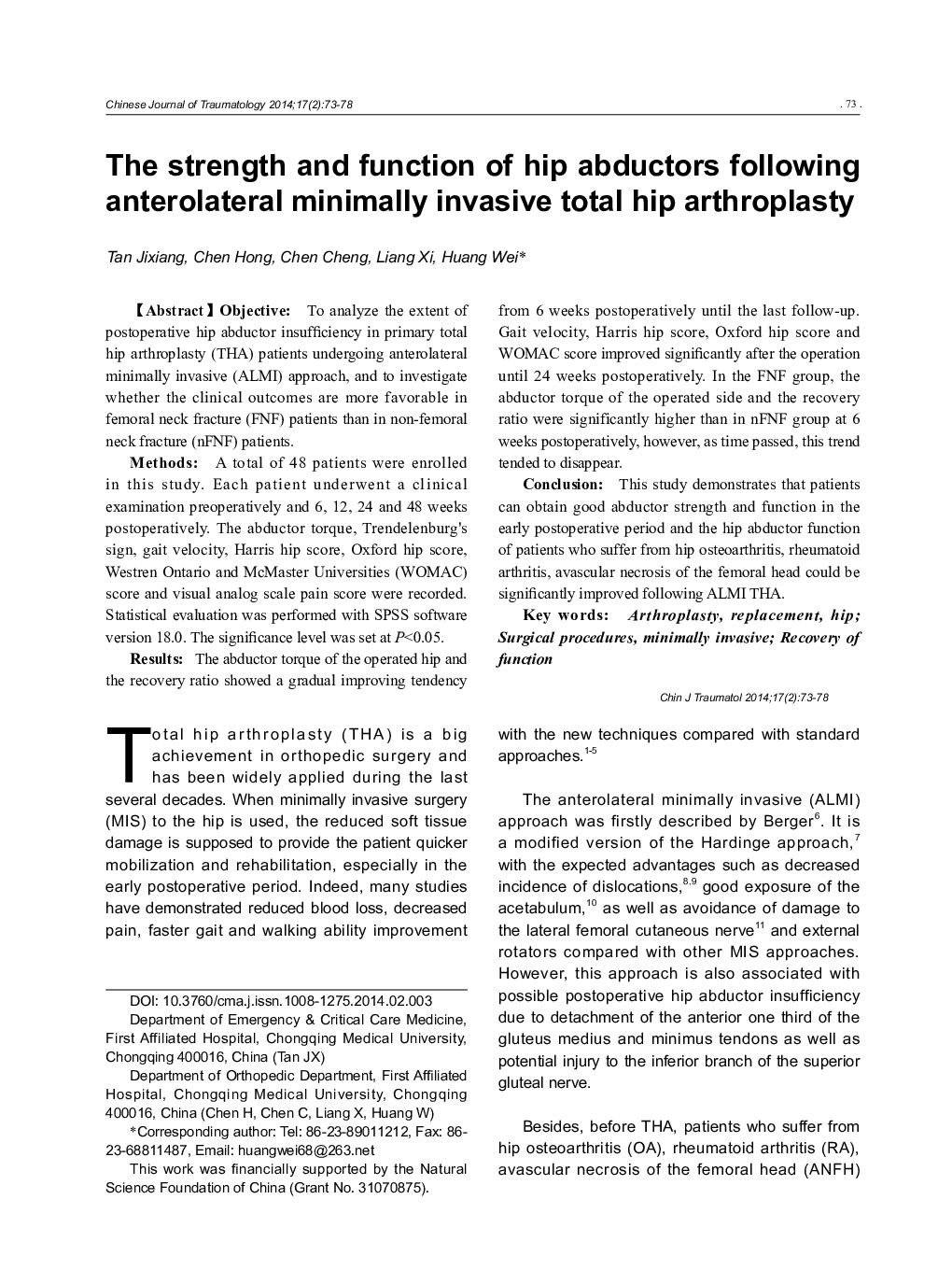| Article ID | Journal | Published Year | Pages | File Type |
|---|---|---|---|---|
| 3107206 | Chinese Journal of Traumatology | 2014 | 6 Pages |
ObjectiveTo analyze the extent of postoperative hip abductor insufficiency in primary total hip arthroplasty (THA) patients undergoing anterolateral minimally invasive (ALMI) approach, and to investigate whether the clinical outcomes are more favorable in femoral neck fracture (FNF) patients than in non-femoral neck fracture (nFNF) patients.MethodsA total of 48 patients were enrolled in this study. Each patient underwent a clinical examination preoperatively and 6, 12, 24 and 48 weeks postoperatively. The abductor torque, Trendelenburg’s sign, gait velocity, Harris hip score, Oxford hip score, Westren Ontario and McMaster Universities (WOMAC) score and visual analog scale pain score were recorded. Statistical evaluation was performed with SPSS software version 18.0. The significance level was set at P < 0.05.ResultsThe abductor torque of the operated hip and the recovery ratio showed a gradual improving tendency from 6 weeks postoperatively until the last follow-up. Gait velocity, Harris hip score, Oxford hip score and WOMAC score improved significantly after the operation until 24 weeks postoperatively. In the FNF group, the abductor torque of the operated side and the recovery ratio were significantly higher than in nFNF group at 6 weeks postoperatively, however, as time passed, this trend tended to disappear.ConclusionThis study demonstrates that patients can obtain good abductor strength and function in the early postoperative period and the hip abductor function of patients who suffer from hip osteoarthritis, rheumatoid arthritis, avascular necrosis of the femoral head could be significantly improved following ALMI THA.
